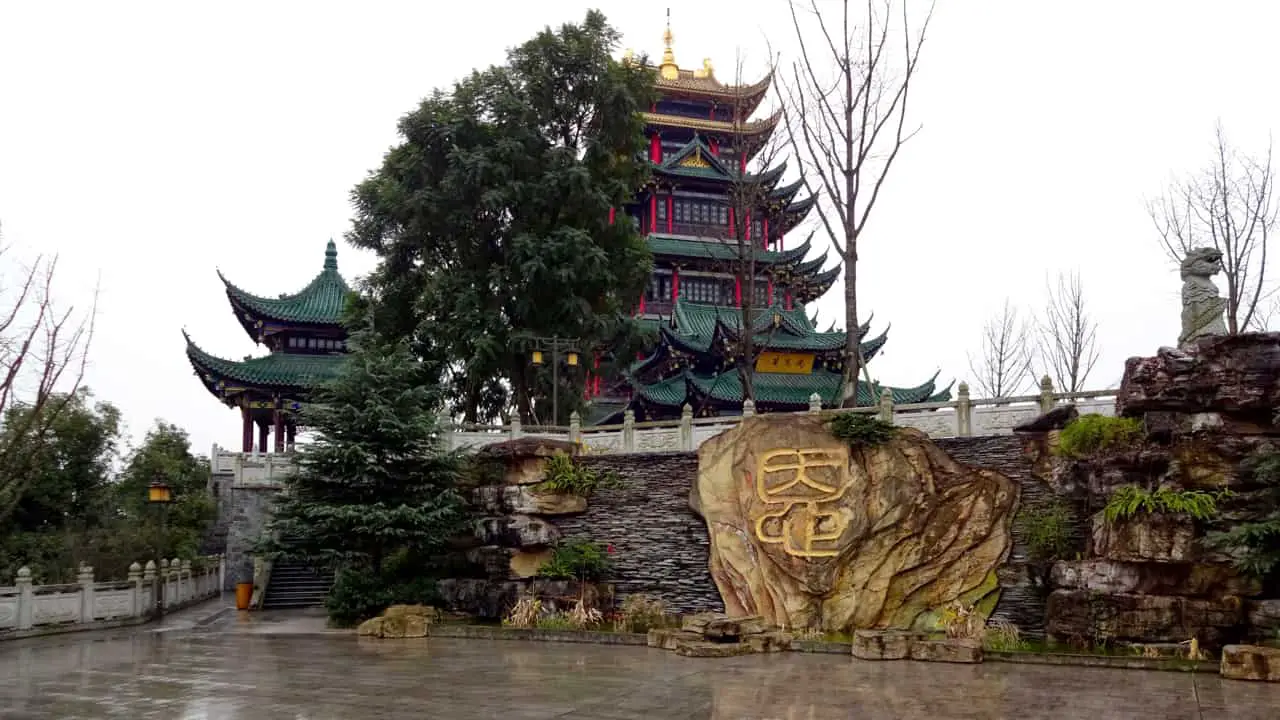Name: 鸿恩寺公园 | Hong’en Temple Park
Where: 重庆市江北区 | Jiangbei, Chongqing, China
What to do: Admire the various plants and flowers the line the walkway up to the newly-built Taoist-style temple.
Getting there: No direct route by subway. It is easiest to take a ~25 RMB taxi from the Guanyinqiao subway station.
Cost: Free
It was another one of what would be many grey mornings in the forthcoming Chongqing winter. I had barely been in the city 2 weeks and had been too preoccupied to explore as much as I normally would. On our mutual weekend, a coworker had offered to take us around to some of his highlights of the city. So, gathering at a street corner outside a local Starbucks, 7 of us were off to his first stop, Hong’En Temple Park.
While in many ways a city of character and offbeat aesthetics, one thing Chongqing lacks is green space. Hong’en Park was a notable exception. From what I later learned it wasn’t always this way. Hong’En used to be as developed as the surrounding area. However, in 2007, all this was cleared in order to make the park.
According to the official stats given on the park, 1.5 million square meters of housing were demolished. This resulted in the relocation of 38,000 people and over 350 businesses before construction began on the current park, which opened in 2009.
Located in an area away from the subway lines, I got the impression not too many foreigners head over this way. Nevertheless, most signs had an English translation. And they were confounding at times.
Cemented platforms platforms ready for tents.
Small areas for helicopter landings.
We had to wonder how often these situations actually occurred. Neither campers or event tents seemed overly likely. And the possibility of a helicopter coming through and needing to land, well…
Despite these potential distractions, we continued up Hong’En Park’s considerable and vacant stairs. Makes sense, hosting a ‘mountain’ temple and all.
And the temple was what we were heading for. We didn’t know it at the time, but when the lot of us newcomers had been looking for apartments in Chongqing, this temple was one of the grey silhouettes we had seen in the skyline.
There isn’t a lot to see on the path to the temple. An abundant number of plants (namely 10,000 laurel trees of 60 varieties) and various flowers make up the landscape. Especially after seeing a number of similar gardening traits Shanghai and Vietnam, I could appreciate it, but it didn’t draw me in as it might others.
One of the odder parts of the walk up came when a number of our party decided they needed to find a restroom. Whether by fortune of the rain or simply too much coffee at Starbucks, this led up to an overlook on a neighborhood still under construction. Matt, our English guide, and the rest of us all considered it looking like it belonged in suburban London in the 1800s rather than in off-the-path China.
One final stretch led us to the gates of the temple, which were, curiously enough, blocked off by a green barrier showing pictures of the temple. Another path curved up the hill to the main temple building.
Apparently Taoist in style, the temple was obviously built very recently, likely along with the park itself. It also seemed as if it were hardly, if ever, used. All the doors were closed and locked, and there was unfortunately no way for us to see the interior of the rather impressive building.
Instead we meandered the grounds and took in the panoramic view of the surrounding city. Gloomy day or not, the view here from atop Longji Mountain gave us all quite the spectacular view of just how sprawling the urban landscape of Chongqing really was.




























Hi,
I know this post is old, but I couldn’t help comment on this, since I live here in Chongqing haha.
The make-shift tents and the helicopter landing pads are areas designated for use in disaster recovery and other emergencies.
So, they are not for events, or camping and the helicopters won’t necessarily land, but the areas are big enough for them to drop supplies down. The surrounding areas, and many parks also double as emergency shelters where, on flat surfaces, tents can be set up.
Anyway, I know this is 6 years too late, but hey.
Hi Mikkel, thanks for the comment. You’re right, the post is certainly due for an update. The comments on the signs were mostly made tongue-in-cheek simply for the facts that they’re oddly there in the first place. But, thanks for the direct explanation.